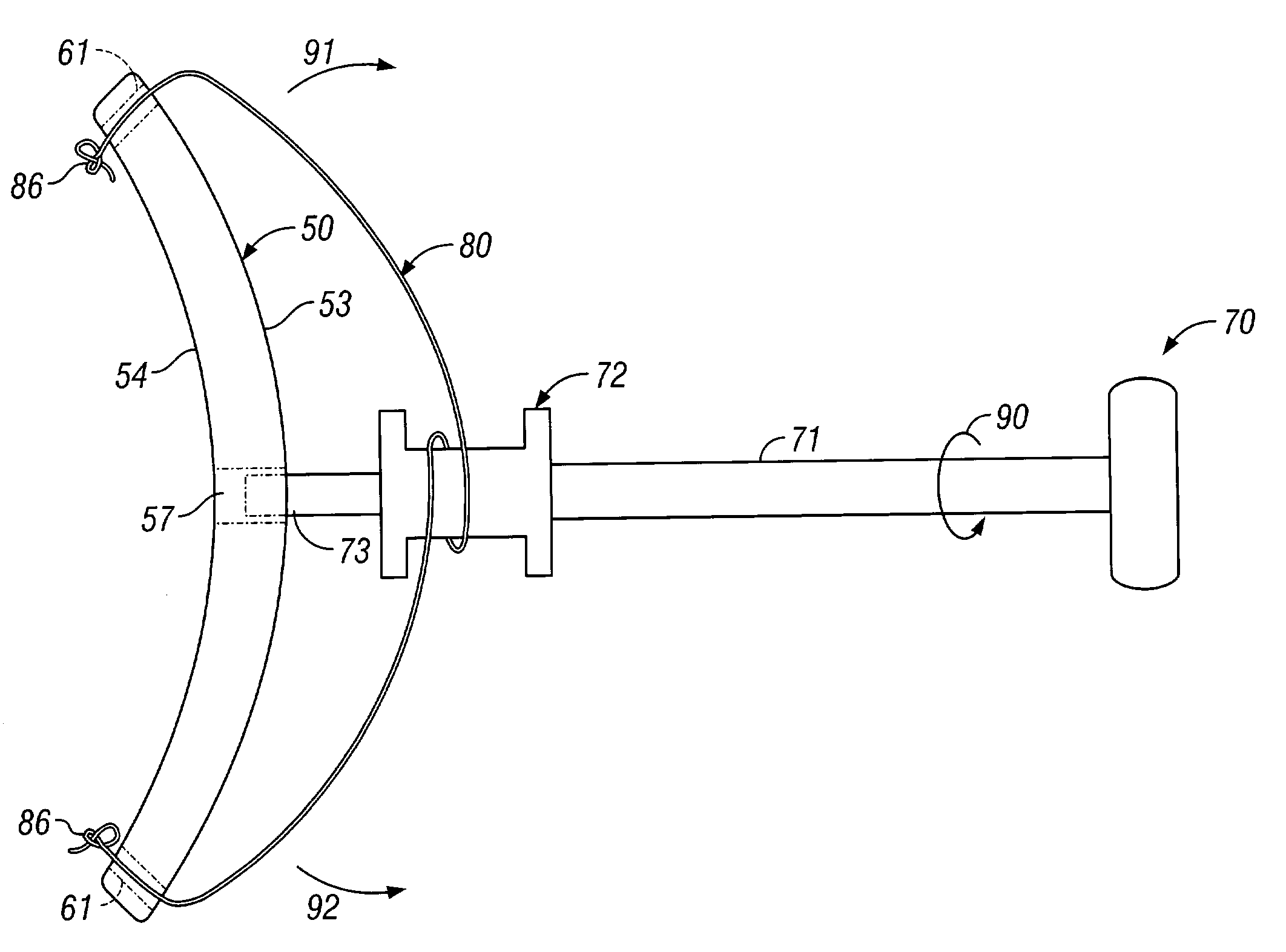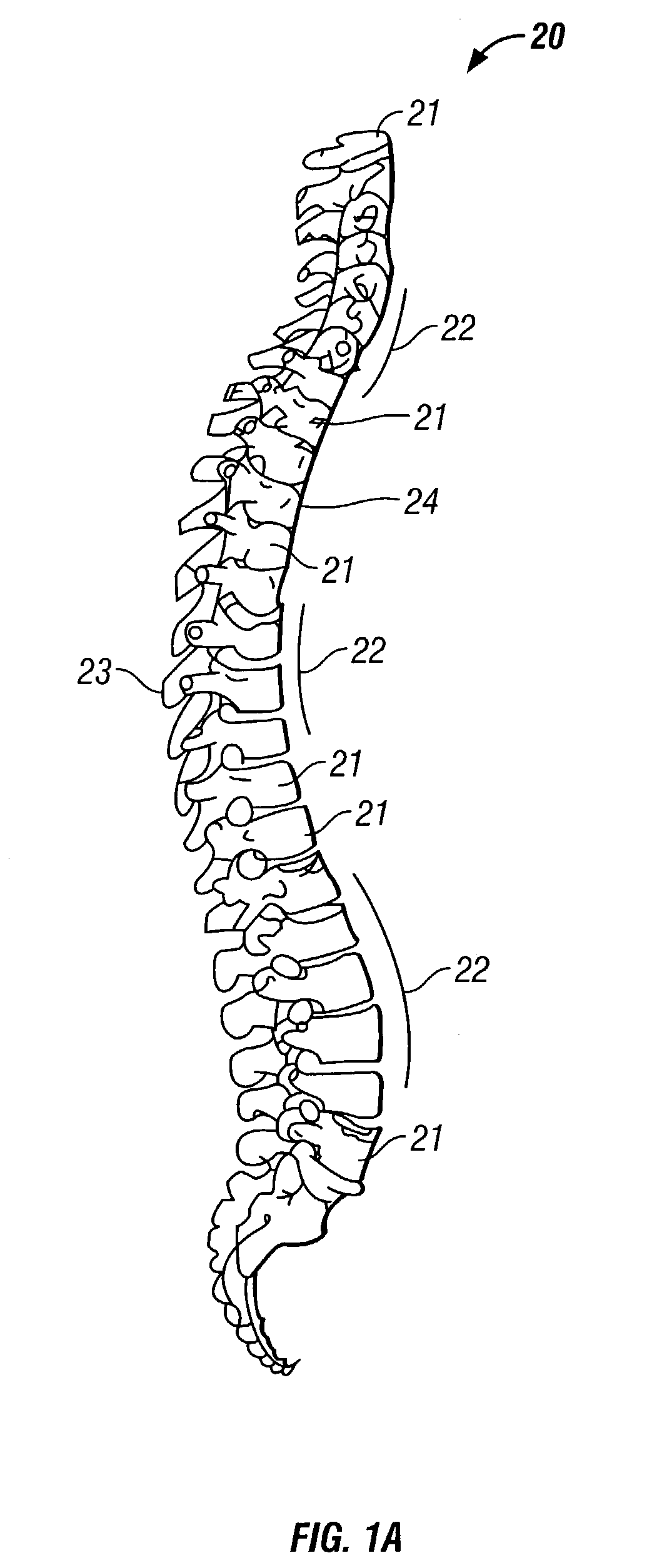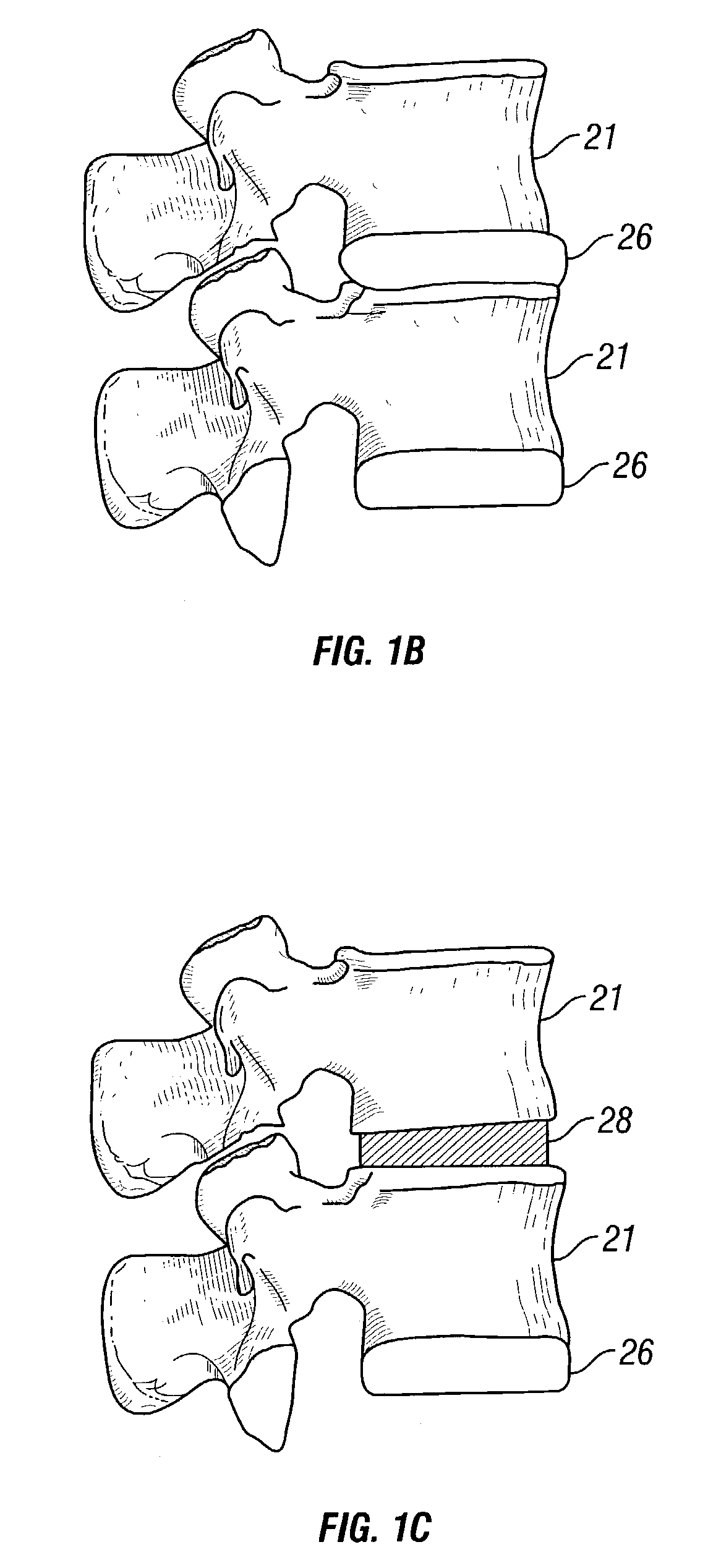Bone compression devices and systems and methods of contouring and using same
a bone compression device and compression device technology, applied in the field of surgical devices, can solve the problems of increasing affecting the success rate of fusing together four or more levels, and affecting so as to increase the success and reduce the failure rate of bone compression devices
- Summary
- Abstract
- Description
- Claims
- Application Information
AI Technical Summary
Benefits of technology
Problems solved by technology
Method used
Image
Examples
Embodiment Construction
[0034]The present invention is directed to bone compression devices and bone compression systems for maintaining at least one bone in a desired spatial relationship. While the description of the bone compression devices, bone compression systems, and methods of contouring the bone compression devices will be directed to use in connection with two or more vertebrae, it is to be understood that the bone compression devices, bone compression systems, methods of maintaining at least two vertebrae in a spatial relationship with each other, and methods of contouring the bone compression devices of the invention may be used, or performed, in connection with any bone in which it is desired to maintain, or place, at least one bone in a desired spatial relationship, e.g., the pelvis, the femur, the fibula, the tibia, humerus, ulna, radius, or any other bone. For example, the bone compression devices of the invention may be employed in long bone, e.g., femur, and pelvic fracture fixation. Furt...
PUM
 Login to View More
Login to View More Abstract
Description
Claims
Application Information
 Login to View More
Login to View More - R&D
- Intellectual Property
- Life Sciences
- Materials
- Tech Scout
- Unparalleled Data Quality
- Higher Quality Content
- 60% Fewer Hallucinations
Browse by: Latest US Patents, China's latest patents, Technical Efficacy Thesaurus, Application Domain, Technology Topic, Popular Technical Reports.
© 2025 PatSnap. All rights reserved.Legal|Privacy policy|Modern Slavery Act Transparency Statement|Sitemap|About US| Contact US: help@patsnap.com



